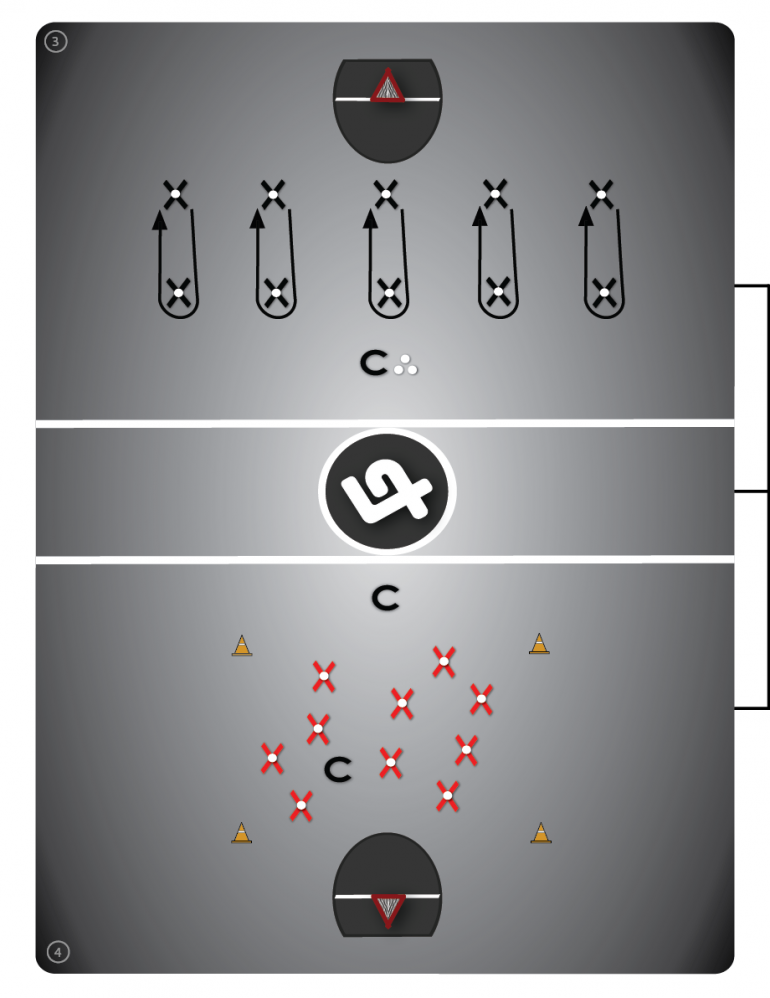
Cradling Drill #1B: Dynamic Cradling
- Demo (1 min): Cradling - Dynamic Cradle, Protecting The Ball, Warding Off
- *Variation #3 (2 min): "Cradling Around A Partner." Line players up across from each other (5 metres away), with balls, and have them take turns cradling around their partner; both directions (left & right) and building up their speed each time around (Variation #3A).
- Advance to removing a ball from one partner (Variation #3B) and after cradling around them, rolling them a loose ball. The player without the ball may also be permitted to try and strip the ball from the player as they cradle around them (Variation #3C).
- *Variation #4 (2 min): "Scrambled Eggs." Create a designated area using pylons, appropriate to the size of the group you are working with. Have all players weave around each other at a walking speed (perhaps in the crease with the net removed for small groups), at jogging speed (between the restraining-lines at centre-floor) and/or at running speed (between the goal-line & the restraining line); depending on numbers on skill level (Variation #4A).
Emphasize players keeping their body between other players and the ball (i.e. protect or “hide” the ball), utilizing proper cradling technique. Once the players get the hang of the technique coaches casually try to dislodge the ball from players who don't have it protected, otherwise pushing them on their hips in order to throw off their centre-of-gravity (Variation #4B). Instead of a coach or coaches trying to dislodge the ball, players could also be designated to do this job, with up to half of the group with a ball and half without; switching roles halfway through the drill (Variation #4C). This drill can also be done as a game whereby if a player drops their ball or gets knocked out of the designated area they must wait until the next game to get back in, otherwise try to dislodge the ball from other players until there are only a few remaining (Variation #4D).
*Variation #5 (2 min): "One-Handed." Teach the "one-handed" cradling technique in a subsequent practice, as well as switching the stick from one hand to the other, again using variations #1 to #4 for practice.
*Most common error = not protecting their stick from their opponent

Would you like to share your thoughts?
Your email address will not be published. Required fields are marked *
Leave a Reply
You must be logged in to post a comment.
Would you like to share your thoughts?
Your email address will not be published. Required fields are marked *
Leave a Reply
You must be logged in to post a comment.
0 Comments